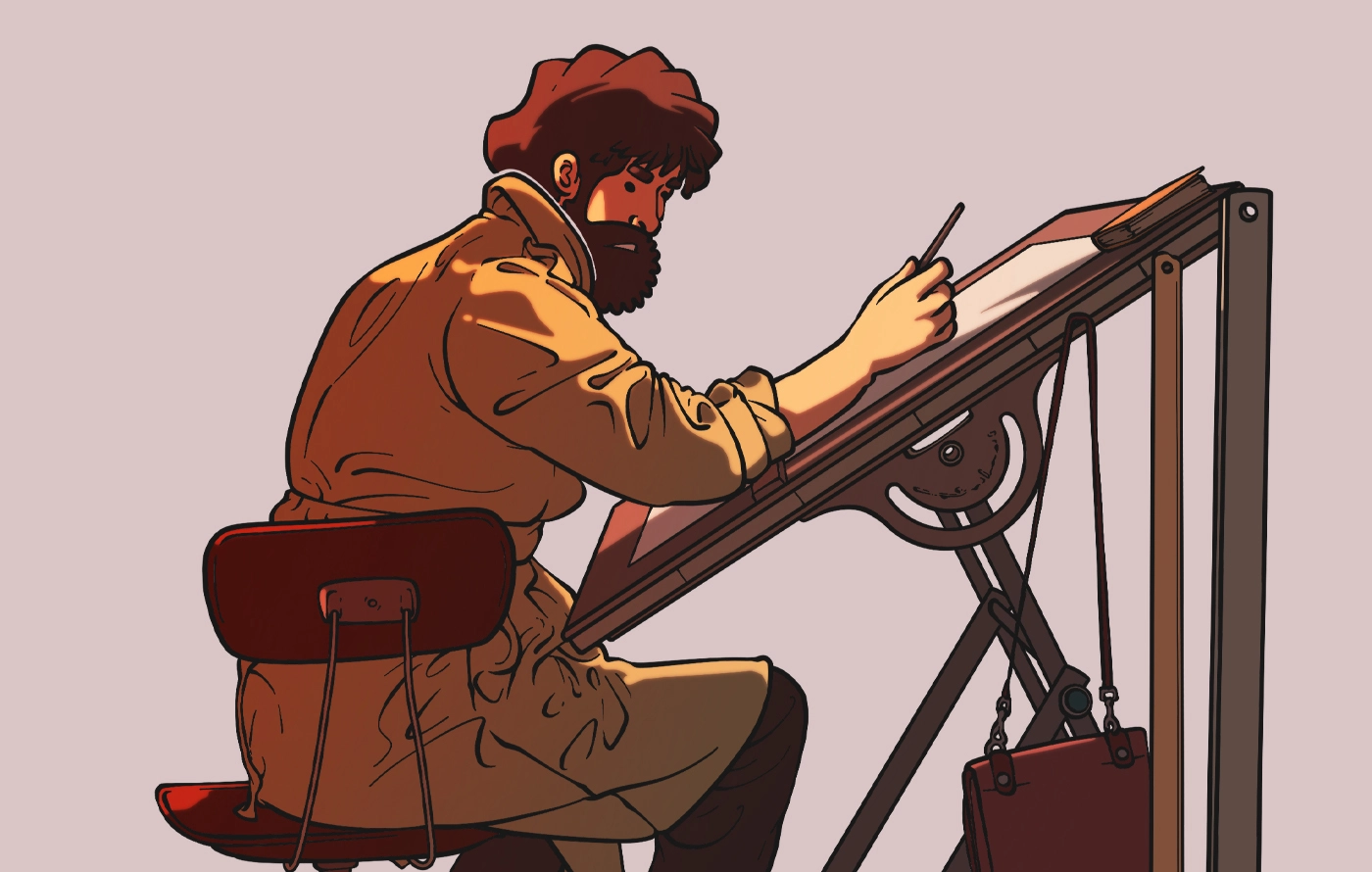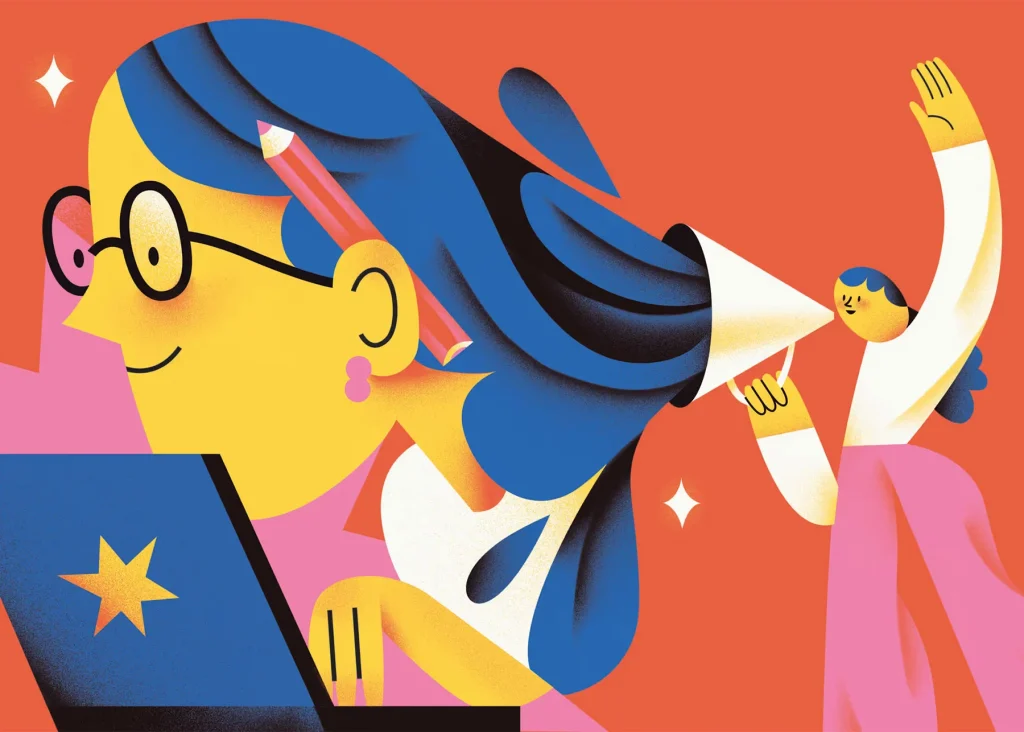In today’s competitive digital world, being a strong brand is not just about offering quality products or services. What truly makes your brand memorable, builds trust with your audience, and creates a professional impression is corporate identity design.
The way your brand looks and feels across every touchpoint defines how people perceive you. A corporate identity is not just a logo or a business card — it’s a complete visual and strategic system that represents your brand’s personality and values.
So, why is corporate identity design so important?
In this article, we’ll answer key questions such as: “What does corporate identity design include?”, “What is corporate logo design?”, “What is the difference between corporate identity and corporate image?” and explain how you can take your brand to a professional level with the right design strategy.
1. What Is Corporate Identity Design?
Corporate identity design encompasses all the visual and communicative elements that define how a brand presents itself to its audience.
From logos and color palettes to typography and marketing materials, every detail contributes to your brand’s personality and perception.
Corporate identity design reflects:
Your brand’s character and values,
The emotions you want customers to feel,
And the credibility and professionalism of your business.
In short, your corporate identity is your brand’s first impression — and first impressions matter.
Just as people are recognized by how they dress, speak, and behave, brands are recognized through their identity design.
At Cancel Studio, we see corporate identity as more than visuals. We design it as a strategic tool that expresses a brand’s story, mission, and unique personality through design consistency and meaning.
2. What Does Corporate Identity Design Include?
Many companies mistakenly think that corporate identity means just a logo. However, a complete corporate identity design covers much more. Here are the key components of a professional corporate identity:
🔹 Logo Design
Your logo is the most visible symbol of your brand. It should be recognizable, memorable, and timeless.
A good logo captures the essence of your brand in a simple yet powerful way.
🔹 Color Palette
Colors communicate emotion.
Red stands for energy and passion, blue conveys trust, and green reflects nature and growth.
A consistent color palette ensures brand harmony across every medium — from your website and social media to printed materials.
🔹 Typography
Fonts set the tone of your brand voice.
Bold, geometric typefaces communicate strength and professionalism, while rounded fonts can evoke warmth and friendliness.
🔹 Corporate Stationery and Printed Materials
Business cards, letterheads, envelopes, presentation templates, and brochures are all part of your physical identity.
They showcase professionalism and attention to detail in your brand’s everyday interactions.
🔹 Digital Identity Elements
Website design, email signatures, social media templates, and online ads are the digital side of your identity.
Consistency across digital platforms is crucial for recognition and credibility.
🔹 Brand Guidelines (Brand Book)
A brand book defines how all visual elements should be used — logo spacing, color codes, correct and incorrect applications, tone of voice, and more.
It ensures that your brand stays consistent no matter who designs your materials.
In summary, corporate identity design creates a unified, professional, and recognizable image for your brand across every channel — digital or physical. A well-crafted identity builds trust and lays the foundation for sustainable growth.

3. What Is Corporate Logo Design?
A logo is the heart of corporate identity — the visual shorthand of everything your brand stands for.
It’s not just a symbol; it’s your brand’s signature.
So, what exactly is corporate logo design, and why is it so important?
Key Principles of Logo Design
Simplicity: Complex logos are hard to remember. Clean, minimal designs are timeless.
Meaning: Every logo should tell a story. For example, Nike’s “swoosh” symbolizes speed and motion.
Versatility: A good logo works on any background, size, or platform — from billboards to mobile screens.
Timelessness: Avoid fleeting trends; design a logo that will represent your brand for years to come.
A logo is not just an image — it’s your visual voice in both the digital and physical worlds.
That’s why it’s critical to design it with strategy, purpose, and professional guidance.
At Cancel Studio, we create logos that go beyond aesthetics. We design them as strategic brand expressions that embody a company’s essence and values.
4. What Is the Difference Between Corporate Identity and Corporate Image?
These two terms are often confused, yet they represent two different — but complementary — concepts.
Corporate Identity
This is how a company wants to present itself to the world. It’s the deliberate creation of a brand’s visuals, communication style, and overall personality — such as logo, colors, typography, and tone.
Corporate Image
This is how people actually perceive your brand. It’s the result of all your actions, visuals, and communications combined.
In simple terms:
Corporate identity is what you say about yourself, while corporate image is what others think about you.
For instance, a brand may design a modern and minimalist identity, but if the customer experience is poor, the corporate image will suffer.
That’s why a strong corporate identity is essential to shaping a positive corporate image.
When your brand identity is clear and consistent, your audience perceives you as reliable, professional, and trustworthy.
5. Why Is Corporate Identity Design an Investment?
Corporate identity design is not just about visuals — it’s a long-term investment in your brand’s reputation and success. A strong identity provides several advantages:
Professional appearance: Builds credibility and customer trust.
Consistency: Keeps all communication channels aligned with your brand voice.
Differentiation: Helps you stand out from competitors.
Customer loyalty: A recognizable identity builds emotional connection and loyalty.
Longevity: A timeless design adapts to change and remains relevant over time.
In short, corporate identity design is not your brand’s “clothing” — it’s your brand’s character. A well-designed identity gives your business a lasting foundation that grows stronger with time.
6. The Corporate Identity Design Process
At Cancel Studio, we follow a detailed and strategic process for every corporate identity project.
Here’s how we bring brands to life visually and conceptually:
Brand Analysis: Understanding your target audience, industry, and brand values.
Strategic Planning: Defining your brand positioning and communication tone.
Design Phase: Creating the logo, color system, typography, and visual elements.
Presentation and Revision: Reviewing concepts, collecting feedback, and refining designs.
Brand Book Preparation: Documenting all usage rules for visual consistency.
Implementation: Applying the identity across all digital and printed platforms.
Through this process, brands gain not just a polished look but a strategic identity system that strengthens their presence and impact.
All designs are delivered in high resolution. A user guide is also provided for the proper use of corporate identity.
You can review our references and view our previously completed corporate identity projects.
A Professional Image Builds a Strong Brand
Corporate identity design defines not just how your brand looks, but also how it’s perceived. No matter how good your products or services are, without a professional identity, your business will always appear incomplete in the eyes of potential customers.
If you want to professionalize your brand, start with your identity. Because behind every successful brand lies a well-planned corporate identity design.
At Cancel Studio, we help brands transform their vision into a coherent, professional identity that resonates across all platforms. We combine creativity with strategy to express your brand’s true personality — consistently and effectively.
“Design begins with aesthetics, but it’s completed with identity.”


